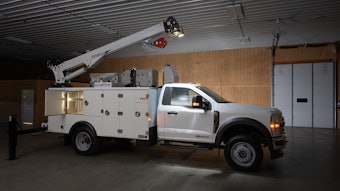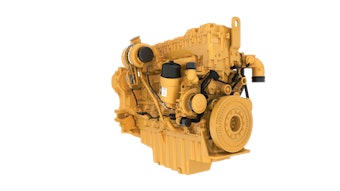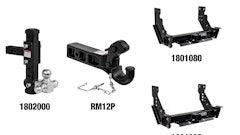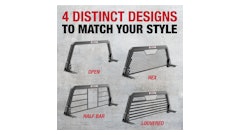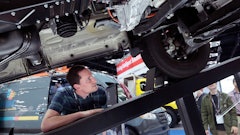
While diesel prices have remained at a reasonable level over the past year, fuel prices are volatile, making it necessary for manufacturers to continue investigating potential alternatives so they’re prepared when prices rise again. Many cities have also announced they will be limiting, if not prohibiting completely, the use of fossil fuel-powered vehicles within city limits over the next decade, further increasing the need for alternative fuel development.
While alternative fuel use is not a new concept, its development and use have been growing in recent years. The applications have been expanding, as well, making it possible for a variety of vehicle and equipment types to experience the emissions reduction, cost efficiency and other benefits alternative fuels can offer.
Due to the growing interest in various alternative fuel options, the U.S. Department of Transportation’s Federal Highway Administration (FHWA) announced last year that 55 routes in the U.S. will serve as the basis for a national network of “alternative fuel” corridors spanning 35 states. New signage will be put up along these routes to alert drivers about the location of alternative fuel stations. The network is currently 85,000 miles long, and the FHWA plans to add more miles in the future to accommodate electric, hydrogen, propane and natural gas vehicles as more refueling and charging stations are built.
Fuel for Thought: Diesel Alternatives for the Non-Road Sector
Natural Gas on the Rise
Natural gas is available in many forms, including compressed natural gas (CNG) and liquefied natural gas (LNG). As it occurs naturally underground, it offers an opportunity for the U.S. to use a domestic fuel, helping to keep its cost low.
Though it is not a 100% clean fuel, natural gas does offer emissions and cost reduction benefits in comparison to diesel. It is also seen by many as a stepping stone along the path to other, more environmentally friendly fuel options.
In June, NGVA Europe (the European Natural & bio Gas Vehicle Association) released a study that found natural gas reduces greenhouse gas (GHG) emissions on a Well-to-Wheel basis in heavy-duty applications by 16% for CNG and up to 15% for LNG compared to diesel. In addition, the study said the use of renewable gas (i.e. biomethane) provides further benefits toward carbon-neutral mobility. When natural gas is blended with 20% renewable gas, it can reduce GHG emissions by 40% compared with oil-derived fuels.
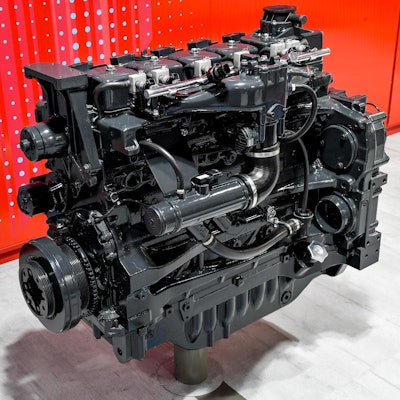 The FPT NES 6 NG engine can operate on biomethane to achieve up to zero carbon dioxide emissions output.
The FPT NES 6 NG engine can operate on biomethane to achieve up to zero carbon dioxide emissions output.
Frost & Sullivan reported in February that by 2025, one in 10 medium- and heavy-duty trucks sold will run on natural gas. “Compressed ignition engines with high-pressure direct injection (HPDI) technology are gaining traction and are expected to garner wide OEM support to reach sizeable scalability by 2025,” stated Saideep Sudhakar, Frost & Sullivan Mobility Industry Analyst, upon release of the new report. “The [natural gas] market is witnessing the first wave of consolidation across integrators and tank manufacturers. Japan, Russia, India and Indonesia are emerging as the next big adopters of [natural gas] vehicles.”
Cummins Westport Inc. introduced its model year 2018 near-zero emission natural gas engines in May. According to the company, the ISX12N and L9N models are the lowest certified nitrogen oxide (NOx) emission engines available in North America; their NOx exhaust emissions are 90% lower than the current Environmental Protection Agency (EPA) limit. All of the engines have the option of using CNG, LNG or renewable natural gas (RNG).
FPT Industrial’s NEF 6 NG engine, which made its debut in 2016, has the ability to operate on biomethane, as well, which the company says helps it achieve up to zero carbon dioxide (CO2) emissions output.
DME Demonstration
Earlier this year, a customer demonstration of a DME-powered Mack truck was announced. Dimethyl Ether (DME) is a clean-burning fuel that provides the same performance as diesel but burns cleanly without producing any soot. When produced from local organic waste, it can reduce GHG emissions by 68% to 101% compared to diesel.
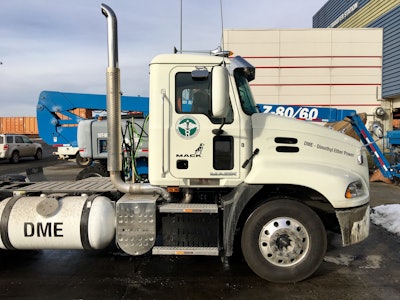 A Class 8 Mack Pinnacle operating on DME underwent testing by the NYC Department of Sanitation during the first quarter of 2017.
A Class 8 Mack Pinnacle operating on DME underwent testing by the NYC Department of Sanitation during the first quarter of 2017.
Mack Trucks’ sister company Volvo Trucks North America first announced a partnership with Oberon in 2013 as part of its alternative fuel strategy. After testing several different options, it chose to focus efforts on this fuel source as it met the performance characteristics it was looking for, as well as emissions reduction goals for both CO2 and GHG emissions.
The project with DSNY will involve use of Oberon’s catalytic distillation technology, which enables production units to be placed near local feedstock sources, so cities like New York can deal with both their waste and energy challenges by doing everything locally. This further aids emissions output as the fuel does not have to be transported long distances to the user.
Propane’s Potential
Propane’s use within the heavy-duty equipment industry continues to expand beyond the commercial mowing and bus segments where it is most notably utilized.
Jeremy Wishart, deputy director of Business Development at the Propane Education Research Council (PERC), says one of the key things the organization does is invest in technologies and market development opportunities beyond the ones in which propane has traditionally been used. “It’s been a multi-tiered, multi-market effort to show customers propane applications, and build their awareness and comfort levels beyond the traditional uses of propane,” he says.
Propane's Evolution into the Off-highway Market
About 10 years ago, PERC started targeting what Wishart calls the light and medium portion of the heavy-duty vehicle and equipment markets, basically Class 7 and below. This market segment began to pick up momentum when Power Solutions International (PSI) introduced its 8.8L propane autogas engine in 2014. The engine is designed to provide diesel-like power and performance, producing 270 hp at 2,600 rpm and up to 565 lbs.-ft. of torque.
 As propane sees increased application in vehicles such as the Freightliner S2G, it is expected there will be increased demand for it in a broader range of applications.Propane Education Research Council
As propane sees increased application in vehicles such as the Freightliner S2G, it is expected there will be increased demand for it in a broader range of applications.Propane Education Research Council
Since its release, Wishart says the PSI engine has started transitioning to other applications. For example, in 2016, PSI partnered with TICO to integrate the 8.8L into TICO’s Pro-Spotter terminal tractor. In March 2017, the companies announced they would integrate a CNG version of the PSI 8.8L into a new prototype terminal tractor being tested by TICO.
“The increasing costs and complexity associated with meeting diesel emissions is helping the shift to offer gasoline and alternative fuel engines,” said Frank Tubbert, TICO general manager, in announcing the new project. “This collaboration reflects that shift. We also wanted, in large part, to offer the customer more choices and to focus on clean air as a major policy objective.”
Seeing the growth potential of propane in various markets, Agility Fuel Solutions announced in May the establishment of a new Powertrain Systems business unit. It will initially focus on the development, certification and integration of low-pressure propane fuel systems for use on OEM engines and vehicles. “The most important step the transportation industry can take toward a healthy planet is replacing diesel with clean fuel. For some fleets, the best choice is natural gas; for others, propane. Agility now offers an even broader portfolio of clean fuel solutions for our customers,” stated Kathleen Ligocki, Agility CEO, while announcing the new division.
Propane can offer both economic and environmental benefits. Though it varies by application and duty cycle, on average, propane-powered equipment can provide a 30% to 50% lower operating cost, says Wishart. It also offers reductions in fuel evaporation, theft and spillage, which all contribute to a fleet’s bottom line.
In addition, propane doesn’t have the fuel contamination issues often experienced with ethanol and gasoline, and it doesn’t experience the gelling in cold climates seen with diesel fuel. This is particularly beneficial for off-road applications, as the equipment may not get used every day, thus causing startup issues with diesel.
On the environmental side, Wishart says propane emits 15% less GHG and 40% less carbon monoxide.
Todd Mouw, vice president of sales and marketing at ROUSH Clean Tech, also notes that because propane is liquid and portable, it can be stored onboard a vehicle in a comparable amount to diesel without compromising load capacity. He says the technology is easier to maintain, as well, as there is no aftertreatment system on the engine.
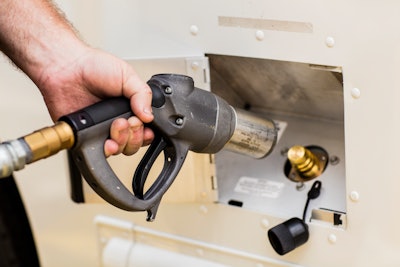 According to ROUSH CleanTech, the propane infrastructure is relatively easy and inexpensive, and should not be an inhibitor to expanded use. Shown is a propane refueling apparatus.
According to ROUSH CleanTech, the propane infrastructure is relatively easy and inexpensive, and should not be an inhibitor to expanded use. Shown is a propane refueling apparatus.
“We continue to invest in our supply chain and we believe this will further strengthen our foundation and give more customers the confidence to make the change,” he says. “Propane infrastructure is relatively easy and inexpensive, so that should not be an inhibitor to seeing the growth accelerate.
“Ultimately, human nature is resistant to change. But with propane autogas, we have a domestic, value-priced, clean and abundant energy source that will allow operators to reduce operating cost without compromising the asset from a performance and durability perspective,” says Mouw. “We believe there will be strong demand signals from the market as we get more Class 6 to 7 operators seeing the results and wanting that to extend into their larger, Class 8 equipment.”
This is, of course, by no means a comprehensive list of all the alternative fuels in development and use today. But it does provide a picture of the variety of fuel options available, which is beneficial as not all fuels are suited for all applications. Having multiple options ensures there is a fuel that best meets each individual application’s specific needs, and better aids the transition away from fossil fuel use..




